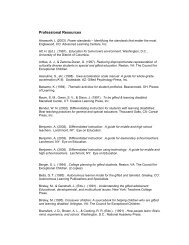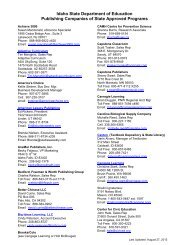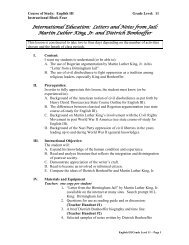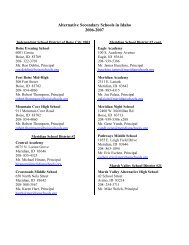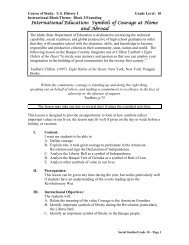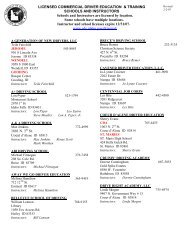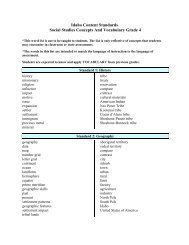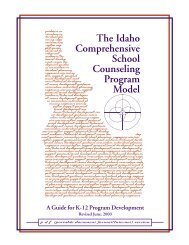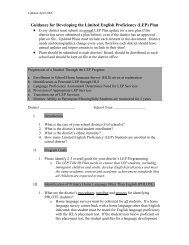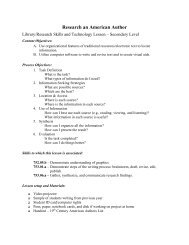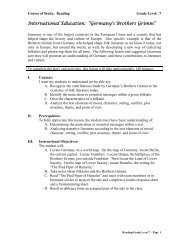Create successful ePaper yourself
Turn your PDF publications into a flip-book with our unique Google optimized e-Paper software.
Geometry and Art: <strong>Origami</strong><br />
Ridgeline crease: a crease within a molecule that propagates inward from the corners<br />
of the molecule. Ridgeline creases are always valley folds when viewed from the interior<br />
of a molecule.<br />
River: a usually-curved or rectangular constant-width region in a tile or crease pattern<br />
that creates a segment between groups of flaps in the folded form.<br />
S<br />
Sawhorse molecule: a crease pattern within a quadrilateral similar to the Waterbomb<br />
molecule, but with a segment separating the two pairs of flaps. Also known as the<br />
Maekawa molecule.<br />
Scale: a quantitative measure of efficiency. The scale of a crease pattern is the ratio<br />
between the length of a folded flap and the length of its corresponding edge in the tree<br />
graph.<br />
Shaping: the folds that transform an abstract, geometric base into the finished figure.<br />
Side view: a model is folded in side view if when the model lies flat you are looking at<br />
the side of the subject.<br />
Sink fold: inversion of a point. Sink folds come in several different types.<br />
Splitting points: see point-splitting.<br />
Spread sink fold: a sink fold in which the edges of the point are spread and the point<br />
flattened. Similar to a squash fold.<br />
Square/river packing: the analog of circle and river packing that allows box-pleated<br />
crease patterns.<br />
Squash fold: a fold in which the edges of a flap are spread, usually symmetrically, and<br />
the edges flattened.<br />
Standard bases: the most common origami bases, usually taken to include the Classic<br />
Bases plus the Windmill Base, Cupboard Base, Preliminary Fold, and Waterbomb Base.<br />
Stretched Bird Base: a form of the Bird Base in which two opposite corners are pulled<br />
apart to straighten out the diagonal that connects them.<br />
Strip graft: modifying a crease pattern as if you spliced in one or more strips of paper<br />
running across a crease pattern in order to add features to the base.<br />
Stub: a new edge added to the tree graph attached to a new node introduced into the<br />
middle of an existing edge and associated creases added to the crease pattern. Adding<br />
a stub allows four path conditions to be simultaneously satisfied as equalities.<br />
Subbase: a portion of a base, usually consisting of a single axial polygon.<br />
Subtree: the tree graph that is the projection of a subbase.<br />
Swivel fold: an asymmetric version of a squash fold in which the two valley folds are<br />
not collinear.<br />
Section 8 Page 112



